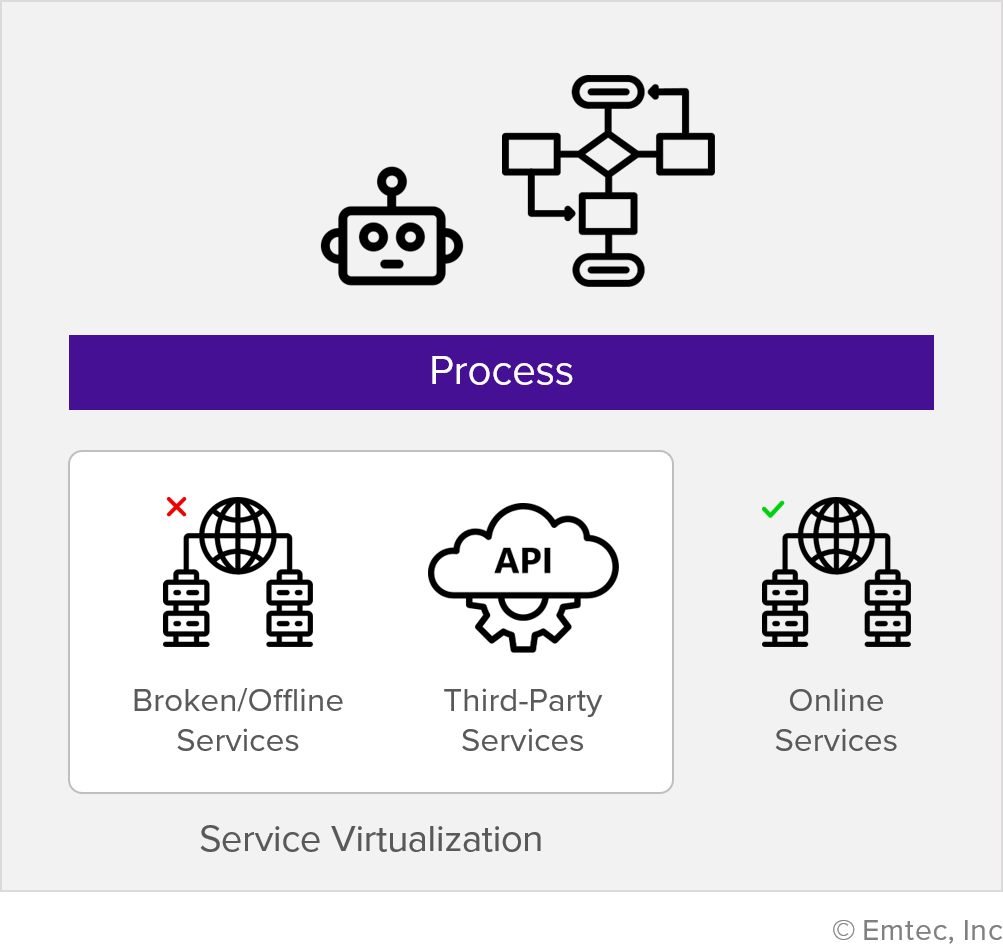08.31.21 By Sreenivas Vemulapalli

Organizations often need rapid deployment of bots to automate their business processes and go-to-market initiatives. Speedy bot deployment enables firms to accelerate their processes, improve accuracy, deliver greater value, and enhance their market position.
The success of process automation involving multiple systems of record requires technology and process specialists with diverse skills. Along with skills and resources, it takes time, effort, and investments for a successful rollout.
RPA enthusiasts are always on the lookout for newer methodologies and processes to shave time off their sprints and rapidly deliver maximum value. Thanks to Bridgenext’s (former Emtec Digital) innovation team, they need look no further! We have developed an accelerator that empowers development teams to deploy bots with increased speed, precision, and quality.
Unavailability of APIs and integrations for all systems in play
As part of process automation, bots need to interact with various enterprise systems such as ERP, CRM, HRM, and SCM. Often, getting access to these enterprise systems/APIs can be challenging, causing delays in the bot development process. Also, to address corner cases and negative scenarios, developers need a lot of data in the “System of Record” which isn’t always easily available. Typically, this data originates in upstream systems and flows into the “System of Record” after going through various approvals and rules. Generating data in the source systems can be tricky and time-consuming and this can cause additional delays in the overall development process.
In computing terms, virtualization refers to the act of creating a virtual version of something, including virtual computer hardware platforms, storage devices, and computer network resources.
Taking virtualization a step further, Service Virtualization is the process of creating mockups of APIs or required services with desired features to enable multiple teams to continue their respective tasks without hassle or interruption. It uses mock data/dummy APIs to get a head start on development that can later be switched over to the actual APIs, once those are developed.
Service virtualization ensures the application’s components integrate early in the development cycle, for significant time and cost savings and improved application quality. Some of the other benefits offered by service virtualization are-
Today’s fast-paced world demands “faster time to production” for rapid digital transformation and enhanced ROI. Stakeholders are on a constant lookout for ways to accelerate their enterprise software development process. At Bridgenext, we apply the concept of the “Software Factory Model” to RPA to accelerate the development of bots using predefined standards, accelerators, and re-usable components. Using this approach, we deliver bots in 4-6 weeks by optimizing the development process to achieve significant improvements in the quality of the bots we deliver without compromising on the business objectives.
At Bridgenext, we utilize an internal accelerator for “Service Virtualization” to deliver quality bots on an accelerated timeframe. Service virtualizations simulate the behavior of select components such as REST APIs, Web Services, and Databases within heterogeneous component-based, service-oriented / Microservice-based applications. This service allows rapid creation of API stubs and simulates the behavior, data, and performance characteristics of real services to create efficient development and test environments.

In deploying RPA projects using Service Virtualization, we have observed several advantages –
Do you wish to accelerate bot creation for automating and optimizing core business processes? Contact our RPA experts, today!
Source: https://www.gartner.com/en/documents/3087717/market-guide-for-api-testing-and-service-virtualization